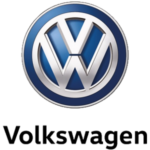As vehicle exports from Mexico to North America surged, Volkswagen Mexico found itself confronting a significant supply chain crisis. Its long-established logistics model, built around rail and RoRo (Roll-on/Roll-off) shipping, could no longer keep pace. Capacity shortages, service unreliability, and inventory congestion threatened to disrupt VW’s production flow and delivery commitments to U.S. and Canadian dealerships. In response, the company turned to Maersk Mexico to co-develop an alternative. The result was a transformative solution: Cars in Containers (CIC).
Supply Chain Pressures Reach a Breaking Point
Volkswagen Mexico, one of the country’s largest automotive exporters, primarily serves the U.S., Canada, and domestic markets. Historically, railways and RoRo vessels efficiently moved finished vehicles from VW’s production facilities to their destinations. However, as North American demand accelerated, a lack of available railcars and vessel space emerged.
The issue reached a critical point when a key rail provider’s service shortfall forced VW to temporarily halt production. Storage yards reached full capacity with finished vehicles waiting to be moved. The inability to secure sufficient transport capacity not only strained inventory management but also exposed the company to increased vehicle damage risks and customer delivery delays.
Rethinking Automotive Logistics: The Birth of Cars in Containers
Recognizing that traditional modes of transport could no longer provide the needed capacity or flexibility, Volkswagen partnered with Maersk Mexico to explore alternative solutions. Together, they launched the Cars in Containers (CIC) program—an innovative approach to ship finished vehicles in ocean containers, bypassing reliance on rail capacity and specialized car carriers.
While containerized automotive transport is not new, it was an unconventional choice for Volkswagen’s North American export strategy. The Maersk team worked closely with VW’s logistics experts to design a process that minimized operational disruption and optimized handling to avoid damage. Integration into the existing supply chain was carefully planned to ensure continuity and rapid implementation.
Operational and Efficiency Gains
The shift to CIC provided immediate relief and long-term advantages:
Space optimization: The container solution improved space utilization and allowed VW to resume production by clearing backlog in storage yards.
Damage reduction: Vehicle damage rates fell to an unprecedented 0.025%, a dramatic improvement compared to previous methods.
Supply chain flexibility: With containerized transport, VW gained new routing options, bypassing congested rail networks and RoRo capacity shortages.
Improved speed-to-market: The solution enabled timely deliveries to critical U.S. markets, including Midlothian, Jacksonville, and Baltimore, improving responsiveness to dealership needs.
In total, over 8,100 finished vehicles were successfully shipped through the CIC program during its initial rollout.
Beyond the Immediate Fix: Building a Resilient Supply Chain
The collaboration between Volkswagen Mexico and Maersk didn’t end with solving the immediate problem. The CIC solution is now part of Volkswagen’s long-term logistics strategy, providing a scalable alternative for future growth.
Looking ahead, Maersk and Volkswagen are working on expanding the solution further, potentially integrating air services to provide even greater flexibility for critical shipments. This strategic shift underlines the importance of agile supply chain design, especially for industries like automotive, where delivery reliability directly impacts customer satisfaction and brand reputation.
Takeaway for Supply Chain Leaders
Volkswagen Mexico’s experience offers an instructive case for logistics professionals. In a landscape marked by capacity constraints, volatility, and rising customer expectations, traditional logistics models may no longer suffice. The success of the CIC program illustrates how innovation, cross-industry collaboration, and flexibility can create resilience—and deliver measurable business benefits.
By adopting a containerized export model, Volkswagen not only overcame an immediate logistics bottleneck but also positioned itself for future supply chain agility.
Read more at https://www.maersk.com/industry-sectors/automotive/cars-in-containers
The post How Volkswagen and Maersk Solved an Export Bottleneck with “Cars in Containers” appeared first on Logistics Viewpoints.
